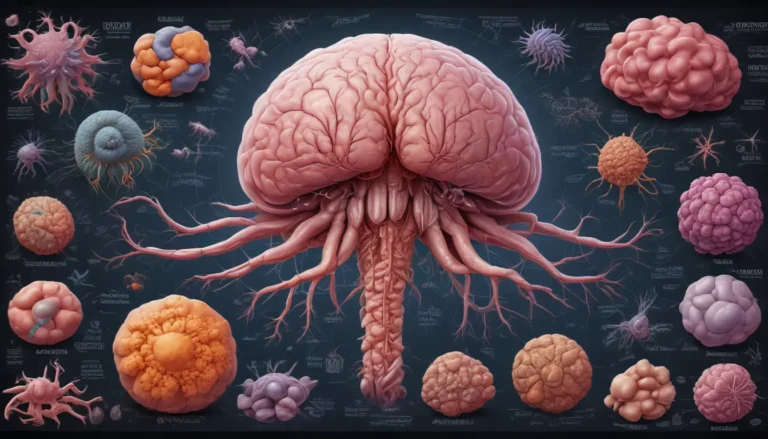A Note About Images: The images used in our articles are for illustration purposes only and may not exactly match the content. They are meant to engage readers, but the text should be relied upon for accurate information.
Welcome to the fascinating world of homeobox genes, the master builders of living organisms. These genes hold the key to understanding how life develops and functions, from the intricate patterns of body segments to the proper formation of organs. Join us on a captivating exploration of 17 facts about homeobox genes, their crucial role in evolution, and the diverse functions they serve. Let’s delve into the significance of these genes and unlock the mysteries of life’s blueprint.
Exploring Homeobox Genes: Nature’s Architects
Homeobox genes are a group of regulatory genes that wield immense power in shaping the development of organisms. They determine the body plan, organs, and other anatomical structures during embryonic development. These genes act as the secret architects of life, orchestrating the delicate dance of growth and differentiation.
Shedding Light on Homeobox Genes: Insights into Their Significance
-
Master Builders of Life: Homeobox genes are like the guiding hands that control how organisms grow and develop. They have been around for centuries, from fruit flies to humans, showcasing their fundamental role in life’s tapestry.
-
Critical Developmental Role: Changes in homeobox genes can lead to a myriad of issues, such as birth defects and cancer. They are the underlying architects that sculpt everything from our organs to our body plans.
Unveiling the Origins of Homeobox Genes: A Historical Perspective
- Discovery in Fruit Flies: The first homeobox gene, Antennapedia, was unearthed in fruit flies by Edward B. Lewis, marking a pivotal moment in genetic research. This groundbreaking discovery paved the way for exploring the role of these genes in development.
Deciphering the Functions of Homeobox Genes: The Blueprint of Life’s Design
-
Formation of Body Segments: Homeobox genes wield control over the formation and identity of body segments in organisms. They specify the development of head, thorax, and abdomen in insects, as well as different regions of the vertebrate body.
-
Characteristics of Homeobox DNA Sequences: The DNA sequence of homeobox genes harbors a distinctive 180-nucleotide sequence known as the homeobox. This sequence encodes the homeodomain protein, responsible for the gene’s regulatory functions.
-
Abnormalities Due to Mutations: Mutations in homeobox genes can disrupt normal development, leading to various abnormalities like limb malformations and facial anomalies.
Diving Deeper into the Roles of Homeobox Genes: Orchestrating Developmental Processes
-
Pattern Formation: Homeobox genes are pivotal in coordinating the formation of patterns and structures during development. They control the positioning and differentiation of cells, contributing to proper organ formation.
-
Implications in Cancer: Abnormalities in homeobox genes have been linked to cancer, as changes in their activity can result in uncontrolled cell growth and tumor formation.
-
Classification into Families: Homeobox genes are categorized into families based on their DNA sequences and protein structures. These families, including Hox genes, ParaHox genes, and NK genes, each serve specific functions.
Unlocking the Mysteries of Homeobox Genes: Implications for Development and Evolution
-
Regulation by Other Genes: The activity of homeobox genes can be regulated by other genes and signaling pathways, ensuring precise control of gene expression during development.
-
Role in Organogenesis: During organogenesis, homeobox genes guide the development and differentiation of specific organs like the heart, brain, lungs, and limbs.
-
Influence of Environmental Factors: Environmental elements like temperature and nutrition can impact the activity and expression of homeobox genes, affecting development and organism phenotype.
Evolutionary Significance of Homeobox Genes: The Poets of Genetic Transformation
-
Evolutionary Role: Duplications of homeobox genes have fueled evolution, providing the building blocks for new genes and the emergence of novel body structures and functions.
-
Stem Cell Regulation: Homeobox genes play a crucial role in governing the self-renewal and differentiation of stem cells, maintaining the delicate balance between pluripotency and differentiation.
-
Cross-Species Presence: While primarily studied in animals, homeobox genes are also found in plants, fungi, and even single-celled organisms, showcasing their universal importance in regulating development and growth.
Unveiling the Hidden Architects of Life: Homeobox Genes in Perspective
Homeobox genes stand as the hidden architects of life, sculpting the intricate structures and patterns that define organisms. Their discovery has illuminated our understanding of development, evolution, and the astonishing complexity of life itself.
Embarking on a Journey of Discovery: Implications and Applications
Homeobox genes offer a captivating field of study with vast implications for scientific research and clinical applications. Their regulatory roles and evolutionary significance present an exciting avenue for further exploration in biology and medicine.
Discover More: Frequently Asked Questions
-
What are homeobox genes?
Homeobox genes are a family of genes crucial in the development and differentiation of organisms, regulating the formation of body segments during embryonic development. -
How do homeobox genes work?
Homeobox genes encode homeodomain proteins that bind to specific DNA sequences, controlling the expression of genes involved in developmental processes. -
Are homeobox genes unique to humans?
Homeobox genes are highly conserved across various species, including humans, indicating their fundamental role in development and evolution. -
What role do homeobox genes play in human health?
Homeobox genes are implicated in genetic disorders and diseases, with mutations or abnormal expression leading to developmental abnormalities and other conditions. -
Can homeobox genes be targeted for therapeutic purposes?
Yes, understanding homeobox genes’ functions can offer insights into potential treatments for genetic disorders and diseases, paving the way for innovative therapeutic approaches.
Delve into the realm of homeobox genes, where each discovery unveils the intricacies of life’s genetic blueprint. Join us on this journey of exploration and understanding as we unravel the secrets of nature’s hidden architects.






